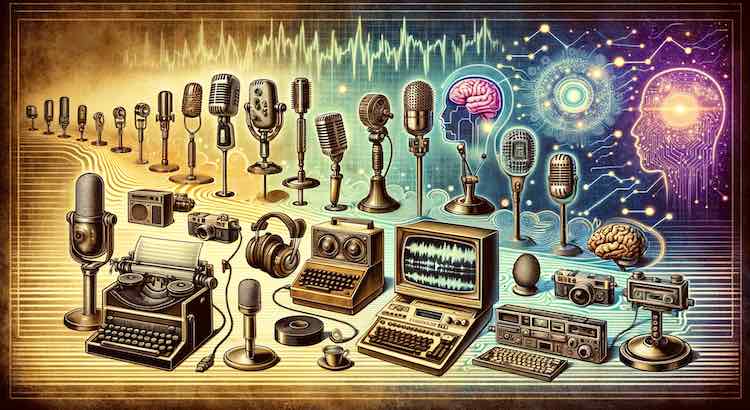The Evolution of Automated Transcription Technology: From Voice Recognition to AI
Automated transcription technology has changed the way we capture and use information. In the past, only basic voice recognition was possible. Today, complex artificial intelligence (AI) and machine learning (ML) drive accurate, fast, and versatile transcription systems. This article explains how transcription has evolved, key milestones, and its growing impact across industries.
The Early Days: Simple Voice Recognition
How Voice Recognition Began
The history of automated transcription services starts in the 1950s and 1960s. Early systems could only understand a few words or numbers. They required a single speaker and were prone to errors.
- Vocabularies were limited to about 16 words (history: 1952-1962).
- Systems had to "learn" each speaker’s voice.
- Transcription speed was much slower than real speech.
Even with these limits, early voice recognition laid the foundation for future technology.
Growth Through the 1980s and 1990s
Improved Algorithms and Computing Power
In the 1980s, new statistical methods like Hidden Markov Models helped computers understand spoken language better. By the 1990s, personal computers became powerful enough for voice-based software for consumers.
- Speech recognition systems could process larger vocabularies of 5,000 words or more.
- Accuracy improved, but background noise and accents still caused problems.
- Systems like Dragon NaturallySpeaking entered the market in 1997.
Challenges Remain
Despite progress, it remained hard for computers to handle:
- Diverse accents and dialects
- Overlapping conversations
- Unfamiliar technical terms or slang
The Rise of Artificial Intelligence in Transcription
How AI and ML Changed the Game
The 2010s saw rapid advances in artificial intelligence. With machine learning, transcription systems could "learn" from more speech data, improving with experience.
- Large datasets allowed AI to understand different voices and contexts (Google Speech, 2017).
- Accuracy rates for automated transcription increased past 90% for clear audio (Stanford, 2017).
Benefits of AI-Driven Transcription
Modern AI transcription brings several advantages:
- Handles more languages and dialects
- Adapts to different accents and speaking styles
- Distinguishes speakers in group conversations
Today, services like AI transcription subscription make high-accuracy transcription available on demand, saving time and resources for businesses, educators, and researchers.
The Deep Learning Leap
What Is Deep Learning?
Deep learning is a branch of AI inspired by the human brain. It uses neural networks to process speech and text. This allows even greater accuracy and speed in transcription.
- Deep learning models can "understand" language structure, context, and meaning (IEEE, 2020).
- Real-time transcription became possible for live events, streaming, and meetings.
Impact on Accessibility
Deep learning makes transcriptions better for everyone, especially people with disabilities.
- Closed caption services and subtitling services use AI to create fast, accurate captions for video and live broadcasts.
- Instant captions help deaf and hard-of-hearing individuals access audio content.
Ongoing Challenges in Automated Transcription
What Makes Transcription Difficult?
Even the best AI transcription struggles with certain issues:
- Background noise and echo
- Multiple speakers talking at once
- Complex language or industry-specific terminology
New Solutions Emerging
Developers are using new tools to improve transcription reliability:
- Noise-canceling technology
- Context-aware language models
- Human review with transcription proofreading services
Combining AI and human experts results in the highest quality transcripts.
Applications of Automated Transcription
Where Is Transcription Technology Used?
Automated transcription has become essential in many sectors. Here’s a glimpse:
- Legal: Creating detailed records of trials and hearings
- Medical: Transcribing doctor’s notes and patient interviews
- Media and Journalism: Turning interviews and reports into text
- Education: Making lectures and webinars accessible to all students
- Business: Capturing meeting notes and conference calls
According to a 2022 survey, 87% of companies using transcription workflows saved significant time and improved data analysis (Statista, 2022).
Supporting Global Communication
Transcription now goes beyond converting speech to text:
- Text translation services convert transcripts into other languages for global reach.
- Audio translation service helps non-English speakers access important content.
- Affordable transcription pricing and captioning services pricing make these solutions accessible for all.
The Future of Automated Transcription
Trends to Watch
Transcription technology continues to move forward. Next, expect even smarter AI, greater language support, and more real-time features.
- Better handling of background noise and accents
- Improved understanding of context for more natural transcripts
- Faster turnaround times, sometimes within seconds
Using Transcription in Your Workflow
Want to harness the latest in AI-driven transcription? Today’s platforms let you order transcription or order captions for all kinds of content in just a few steps.
Conclusion
The journey from early voice recognition to today’s AI-powered transcription systems shows remarkable progress. These tools save time, improve accuracy, and make information accessible to everyone—including people facing language or physical barriers.
If you’re seeking reliable, scalable transcription solutions for your business, research, or creative work, GoTranscript can help. From fast automated and AI-driven transcription to human review, translation, and captioning, GoTranscript offers a full range of transcription services to meet your needs as technology continues to evolve.



















 Verified Order
Verified Order